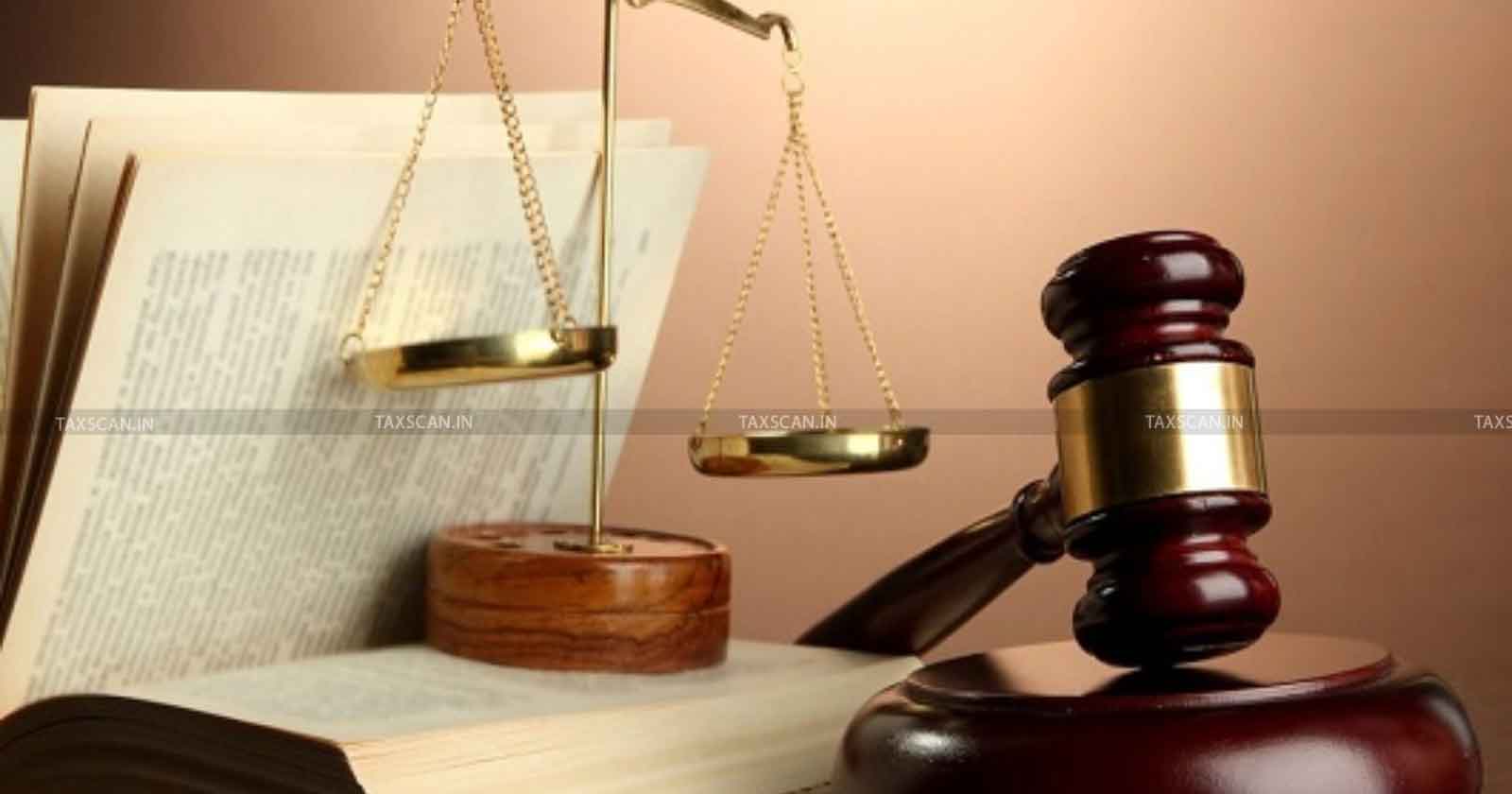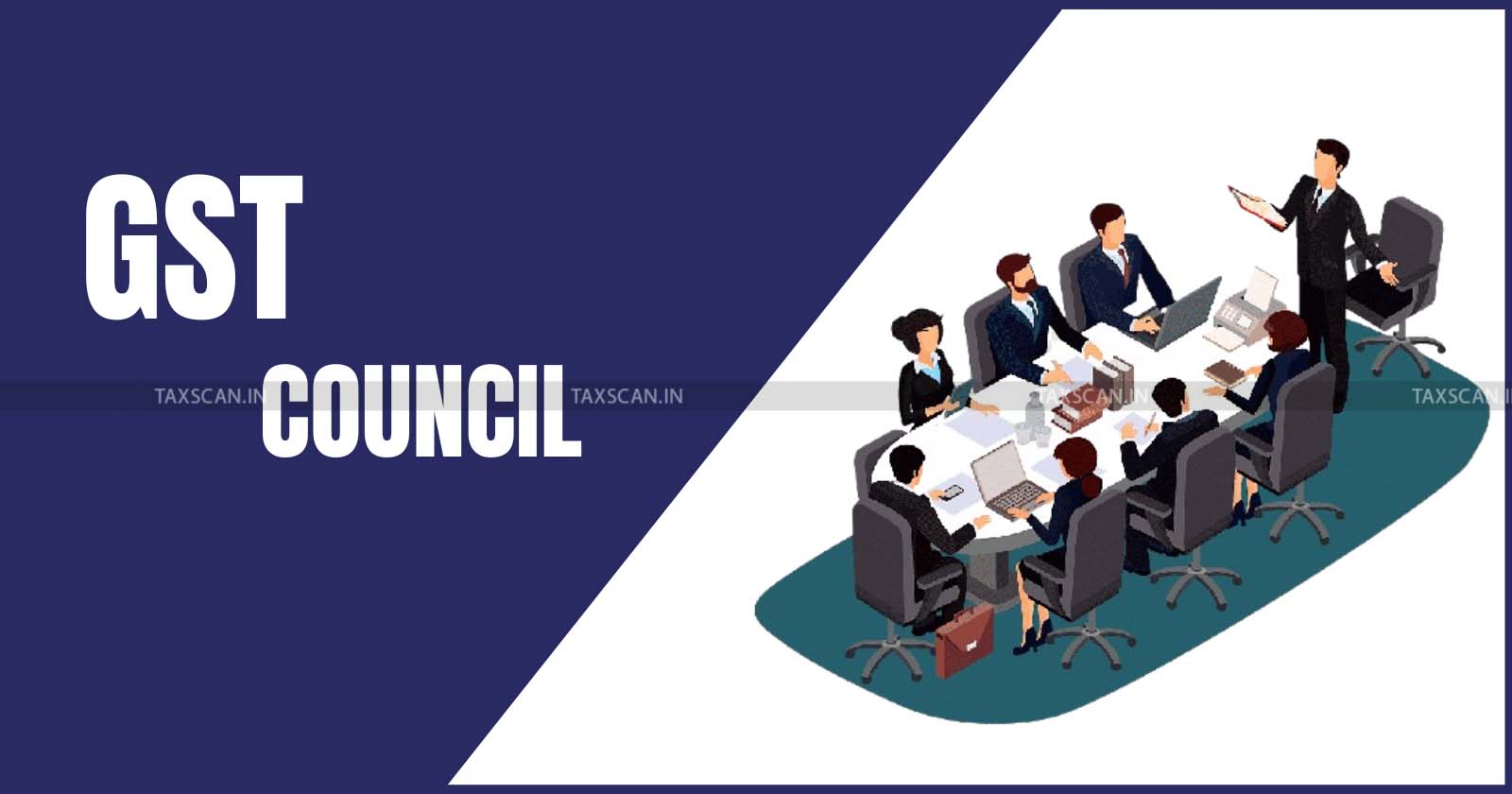The Burden on Those Who Just Want to Walk: Legal and Ethical Dimensions of GST on Prosthetic Limbs and Mobility Aids
No one should have to pay a tax just to stand, walk, or live with dignity. When assistive devices are taxed, it's not just money being taken but infringement of freedom, independence, and equality that are being priced

In India, essential assistive devices such as prosthetic limbs, wheelchairs, crutches, and walkers are subject to Goods and Services Tax (GST), usually at a rate of 5%. The heavy burden imposed on life-enabling tools raises a crucial question: should individuals be taxed simply for wanting to walk, move, or live with basic dignity?
The taxation of assistive technology is not merely a fiscal or administrative matter. It is a deeply human issue that connects with constitutional rights, disability justice, and ethical policymaking. For persons with disabilities (PwDs), the elderly, accident survivors, and para-athletes, these devices are not just optional luxuries but are essential to daily functioning, autonomy, and inclusion. Each additional rupee from taxes reduces affordability, essentially making mobility a luxury subject to government duty.
The GST imposition on mobility aids amounts to taxing the fundamental right to movement. It undermines the very spirit of Article 21 of the Indian Constitution, which guarantees the right to life with dignity, as well as Article 14, which upholds equality. For para-athletes, it burdens their journey with additional financial difficulty that able-bodied athletes do not face for basic equipment.
Get a Handbook on TDS Including TCS as Amended up to Finance Act 2024, Click Here
This article explores the legal, ethical, and international dimensions of taxing assistive devices under GST. It makes the case for reform - not only as good policy but as a moral imperative.
What Are Assistive Devices and Who Uses Them?
Assistive devices and technologies entitle individuals to live independently and participate fully in life. From wheelchairs that enable mobility to hearing aids that amplify sound, these tools help people to overcome challenges. The examples for assistive devices include prosthetic limbs, visual aids, and other specialized software that enhances the communication, mobility, and daily living for PwDs.
The International Classification of Functioning, Disability, and Health (ICF) defines assistive products and technology as any product, instrument, equipment, or technology adapted or specially designed for improving the functioning of a person with a disability.
The International Organization for Standardization (ISO) defines assistive products more broadly as any product, especially produced or generally available, that is used by or for people with disability for their participation; to protect, support, train, measure or substitute for body functions/structures and activities; or to prevent impairments, activity limitations or participation restrictions.
The World Health Organization (WHO) classifies assistive products as essential for health and well-being, comparable to medications or surgical care.
These are not gadgets. They are not luxurious. They are important extensions of the human body that help someone stand up, move forward, claim their independence, or simply feel included in society. For a person who has lost a leg, a prosthetic limb is not just an advanced medical product, but it’s their only way to walk. For a person elderly or recovering from surgery, a walker isn’t a convenience but is their support system.
And yet, under India’s Goods and Services Tax (GST) framework, many of these devices are being taxed by the government. A prosthetic limb that already costs thousands of rupees is made even more expensive by an added 5% tax. A wheelchair comes with its own GST tag. The families are already managing the costs of treatment, rehabilitation, or therapy, and this tax can push essential devices out of reach.
GST and Its Application to Assistive Devices in India
When the Goods and Services Tax (GST) was introduced in India in 2017, one of its promises was simplification, that is, a unified tax system to replace a complex web of indirect taxes.
Under the current GST framework, most assistive devices such as prosthetic limbs, wheelchairs, crutches, walkers, orthopedic appliances, hearing aids, and mobility scooters are taxed at 5%. This may seem like a concessional rate. But for someone already struggling to afford an ₹80,000 prosthetic limb, that extra ₹4,000 can be a final barrier to mobility. These devices, unlike luxury goods or lifestyle choices, are devices people depend on to move, communicate, or live independently. They are taxed almost the same way as many non-essential items.
The GST levied on these devices is also inconsistent. Some items, like hearing aids, are fully exempt from GST, while other equally important devices continue to attract tax.
This issue becomes even more complicated when considering that many of the beneficiaries, such as elderly pensioners, people from low-income families, and para-athletes from under-supported regions who do not have access to insurance or reimbursement schemes. Every rupee matters to them. A tax on an assistive device isn't just a matter of pricing; it's a matter of access.
GST is meant to be a progressive system, one that reflects the economic realities of its citizens, but taxing devices that people need to live with dignity run counter to that spirit.
International Comparison: How Other Countries Treat Tax on Assistive Devices
India is not alone in taxing assistive devices, but it is also not among the most progressive when it comes to improving the financial burden on those who need them most. Around the world, several countries have recognized that disability is not a choice and that taxing the tools required to live with dignity is ethically and socially unjust.
In the United Kingdom, there is a zero-rate Value Added Tax (VAT) on many assistive devices. This includes items like wheelchairs, prosthetic limbs, and stairlifts. The fundamental principle is clear that if a product is medically necessary and life-enabling, it should never be taxed.
In Canada, under the Goods and Services Tax (GST) and Harmonized Sales Tax (HST) system, Canada provides full exemptions for a wide range of medical and assistive devices. The assistive devices, like artificial limbs, wheelchairs, hearing aids, and even hospital beds, are zero-rated when prescribed by a medical professional.
Australia follows a similar model through its GST-free classification for medical aids and appliances listed under the Health Minister’s schedule. This includes mobility aids, continence products, and many types of prosthetics. Their approach is both targeted and empathetic, recognizing assistive devices as part of health care, not commerce.
While VAT rules vary across member states, the European Union VAT Directive allows for reduced or zero VAT on medical and assistive devices. Countries like Germany and France offer substantial tax relief for disability aids when prescribed or certified by medical authorities.
The United States doesn’t have a nationwide VAT or GST system, but many state sales tax exemptions include prosthetics and wheelchairs. Their underlying principle is that mobility and health-related devices should not be taxed like consumer electronics or luxury goods.
In comparison, India’s 5% GST on most assistive devices may seem low-key, but in real terms, it creates a regressive impact on some of the most vulnerable individuals in society. For people with limited means, even a small tax can make the difference between being mobile and being confined.
What these international models show is that tax policy can and should reflect compassion, especially when it comes to enabling basic rights. Around the world, there is growing recognition that taxing assistive technologies is not just a financial issue, it’s a social justice issue.
India, as a signatory to the United Nations Convention on the Rights of Persons with Disabilities (UNCRPD), has the opportunity and the obligation to follow suit.
The Ethical Argument: Why Taxing Mobility Is Morally Problematic
The issue of taxing assistive devices is not just a matter of public finance or indirect tax design but a matter of values. When a government chooses to impose a tax on tools like prosthetic limbs, wheelchairs, or walkers, it makes an unspoken statement that mobility, independence, and dignity are commodities that can be priced.
For people with disabilities, the elderly, and para-athletes, these devices are just not a convenience but are gateways to basic human functioning. The act of taxing them, even at a nominal rate, raises an ethical contradiction. It suggests that people must pay extra just to access the kinds of freedoms that others take for granted, that is to walk, to work, to study, to participate in public life.
This is not just an economic burden. It’s a moral penalty for living with a disability.
A prosthetic limb is not a pair of designer shoes. A wheelchair is not an alternative to a motorbike. These devices exist to level the playing field, not to offer advantage or comfort. They are often acquired during some of the most vulnerable periods in a person’s life, mainly after trauma, illness, amputation, or as part of lifelong impairment. These experiences can be layered with a tax to place a cost on survival, on flexibility, and on resilience.
A tax system must be guided by principles of equity, proportionality, and social responsibility from an ethical point of view. The process of taxing people for needing assistive technology violates all three ethical principles. It is not equitable, because it affects those already marginalized. It is not proportional, because it adds financial weight to those least equipped to bear it. And it is not socially responsible, because it discourages the very tools that enable people to lead fuller, freer lives.
The moral imperative is clear. A society that claims to be inclusive cannot afford to put a price tag on mobility. Whether it’s a child trying to attend school, a para-athlete aiming to represent the nation, or an elderly woman trying to visit her temple, no one should be taxed just to move.
Taxing mobility isn’t just a problematic policy but an ethical failure.
Legal and Constitutional Dimensions
The taxation of assistive devices in India does not merely raise questions of fiscal policy but directly intersects with constitutional rights, statutory obligations, and international commitments. It challenges how India interprets dignity, equality, and inclusion under the law.
Article 21 of the Constitution guarantees every individual the right to life and personal liberty, which the Supreme Court has broadly interpreted to include the right to live with dignity, autonomy, and access to essential conditions of a human existence. Mobility is essential to this dignity. For persons with disabilities, assistive devices are not just an aid but they are enablers of life itself. The State places a financial barrier on that very right by taxing these.
Taxing persons with disabilities for devices they cannot live without, while not taxing others for accessing their basic freedoms, raises concerns under Article 14. It amounts to discriminatory impact, if not direct discrimination, particularly when such taxation creates unequal outcomes for an already disadvantaged group. Even a neutral policy may violate equality if it disproportionately burdens a vulnerable section of society.
India’s Rights of Persons with Disabilities (RPwD) Act, 2016 mandates the State to promote access to assistive technology and remove barriers to full participation in society. Section 42 specifically directs governments to “ensure availability of appropriate technology and assistive devices to persons with disabilities” and to “promote the use of such devices. Taxing these essential devices undermines our commitment to ensuring everyone has access to the tools they need to live with dignity. It discourages affordability and contradicts the proactive duty of inclusion rather than promoting access,
India is a signatory to the United Nations Convention on the Rights of Persons with Disabilities (UNCRPD), which obliges states to take measures to ensure access to mobility aids at affordable cost and to promote economic and social integration of persons with disabilities. Taxing essential devices like prosthetic limbs and wheelchairs creates precisely the kind of systemic barrier that the UNCRPD aims to eliminate.
A legal challenge on the ground that GST on assistive devices is inconsistent with Articles 14 and 21, and the RPwD Act, could potentially invite judicial scrutiny especially if it can be shown that such taxation causes denial of access to mobility and inclusion.
Impact on Para-Athletes
The path to the podium is often longer, harder, and more expensive than it is for their able-bodied counterparts for para-athletes. In addition to the harsh training and determination required of any elite athlete, they must also navigate the high costs of specialized assistive technology like the sports-grade prosthetic limbs, customized wheelchairs, mobility supports, and adaptive gear, which are not only expensive but also subject to GST under current Indian tax law.
A professional-grade running blade normally can cost upwards of ₹4–5 lakhs with an addition of 5% GST to that, and the tax alone can amount to ₹20,000 or more. The total sum that could cover months of physiotherapy, coaching, or nutrition. For athletes hailing from underprivileged backgrounds or rural areas, this added cost can mean the difference between competing and giving up the dream altogether.
The devices used by para-athletes must be high-performance, lightweight, and often imported which makes them even more expensive, unlike regular prosthetics. Most of these are not covered by government subsidies or insurance schemes and corporate sponsorships are rare for these devices particularly for athletes in the early stages of their careers. Many para-athletes rely on crowdfunding or personal loans just to acquire the equipment needed to train, let alone to win.
Taxing such essential gear doesn’t merely burden an individual but it undermines national sports development and sends a disheartening message to aspiring athletes with disabilities: that their ambitions come with a cost that others don’t have to bear.
If India truly wants to promote inclusion in sports and uphold the spirit of “sports for all”, it must start by removing the financial barriers that obstruct access to mobility and performance. A tax exemption on competitive-grade assistive devices for registered para-athletes would not be an act of charity but will be a recognition of equity, justice, and national pride.
Policy Recommendations
The most direct and impactful policy would be to fully exempt all assistive devices under GST. This should include not only basic mobility aids like prosthetic limbs, wheelchairs, crutches, and walkers, but also advanced assistive technologies such as screen readers, Braille printers, and sports-grade prosthetics used by para-athletes.
This would bring India in line with several progressive tax regimes globally and reflect the spirit of the Rights of Persons with Disabilities (RPwD) Act, 2016.
The GST Council, in consultation with disability rights organizations, para-athletes, rehabilitation experts, and medical professionals, should issue a comprehensive and regularly updated list of devices and technologies eligible for exemption. This would reduce ambiguity and ensure that essential aids are not misclassified as luxury or optional goods.
The government should introduce targeted tax relief or direct subsidy schemes for registered para-athletes. These exemptions could be managed through the Paralympic Committee of India or through certified medical boards, ensuring that only legitimate claims receive support.
A dedicated working group within the GST Council should be formed to assess how current tax structures affect persons with disabilities. This group should include representation from disability advocacy groups, economists, public health experts, and legal scholars.
The policy changes must be accompanied by awareness drives to inform PwDs, caregivers, para-athletes, and rehabilitation professionals about available exemptions, schemes, and rights. The knowledge gaps often result in under utilization of benefits, even where relief exists on paper.
Conclusion
In a country that aims to be inclusive, progressive, and rights-driven, taxing the very essential tools that enable mobility, communication, and independence is a contradiction no longer we can afford to ignore. Prosthetic limbs, wheelchairs, crutches, walkers, and other assistive devices are not just commodities but are extensions of the self for those who depend on them. Taxing them is not just a financial imposition; it is a symbolic failure that burdens some of the most vulnerable among us for simply trying to live a normal life.
Under the current GST regime, India inadvertently sends a message that the right to move, work, study, or play comes at a premium if you happen to have a disability. This message runs counter to the ideals elevated in the Constitution, the Rights of Persons with Disabilities Act, 2016, and the United Nations Convention on the Rights of Persons with Disabilities, all of which recognize mobility and access as fundamental to dignity and equality.
Across the world, many countries have responded to this challenge with empathy and pragmatism, offering tax exemptions or full subsidies on assistive devices. India has the legal framework, the moral obligation, and the administrative capacity to do the same. What it needs is the political will to recognize that no person should be taxed for their right to move, and no athlete should pay a premium to represent their country on the global stage.
Support our journalism by subscribing to Taxscan premium. Follow us on Telegram for quick updates








